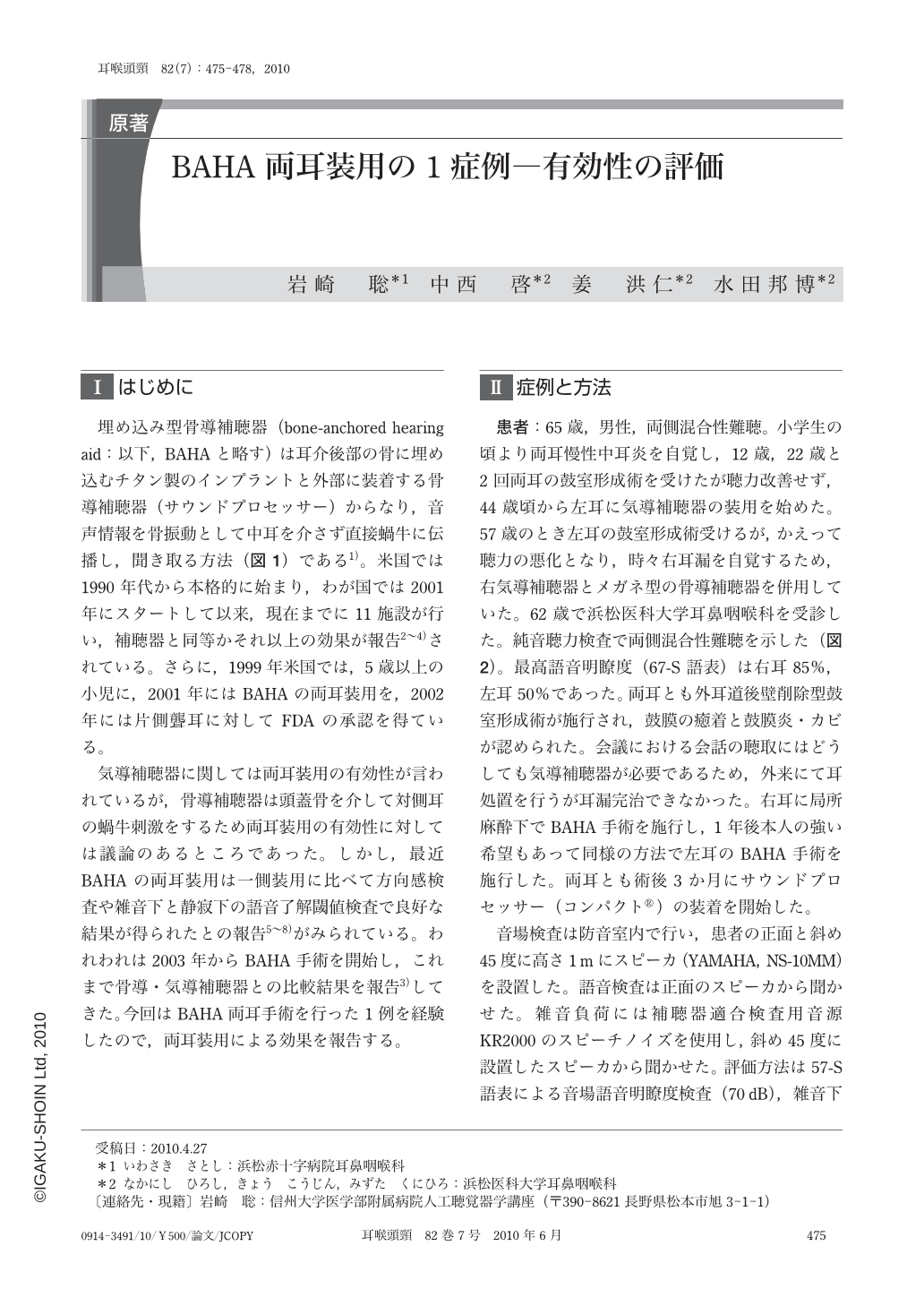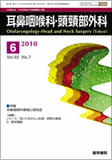Japanese
English
- 有料閲覧
- Abstract 文献概要
- 1ページ目 Look Inside
- 参考文献 Reference
Ⅰ はじめに
埋め込み型骨導補聴器(bone-anchored hearing aid:以下,BAHAと略す)は耳介後部の骨に埋め込むチタン製のインプラントと外部に装着する骨導補聴器(サウンドプロセッサー)からなり,音声情報を骨振動として中耳を介さず直接蝸牛に伝播し,聞き取る方法(図1)である1)。米国では1990年代から本格的に始まり,わが国では2001年にスタートして以来,現在までに11施設が行い,補聴器と同等かそれ以上の効果が報告2~4)されている。さらに,1999年米国では,5歳以上の小児に,2001年にはBAHAの両耳装用を,2002年には片側聾耳に対してFDAの承認を得ている。
気導補聴器に関しては両耳装用の有効性が言われているが,骨導補聴器は頭蓋骨を介して対側耳の蝸牛刺激をするため両耳装用の有効性に対しては議論のあるところであった。しかし,最近BAHAの両耳装用は一側装用に比べて方向感検査や雑音下と静寂下の語音了解閾値検査で良好な結果が得られたとの報告5~8)がみられている。われわれは2003年からBAHA手術を開始し,これまで骨導・気導補聴器との比較結果を報告3)してきた。今回はBAHA両耳手術を行った1例を経験したので,両耳装用による効果を報告する。
A 62-year-old male,who suffered from chronic middle ear problems and had severe mixed hearing loss on the both ears,received the first bone-anchored hearing aid(BAHA)on the right side and the second BAHA on the left side after 1 year. The effect of bilateral application of BAHAs was examined in terms of speech discrimination in quiet and in noisy environment and by questionnaire. An improvement with bilateral fitting was found for speech discrimination in quiet and questionnaire. Binaural listening with bilaterally fitted BAHAs did not have any significant effect on speech discrimination in noise,compared with unilaterally fitted BAHA.

Copyright © 2010, Igaku-Shoin Ltd. All rights reserved.


